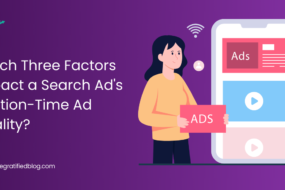
In the ever-evolving business landscape, gaining a deep understanding of the distinctions between ‘marketing’ vs ‘promotion’ is not just beneficial, it’s empowering. While these terms are often used interchangeably, this blog is here to equip you with the knowledge to leverage marketing and promotion effectively, maximizing your potential for success by delving into the key differences and how they complement each other.
Let’s begin by grasping their fundamental definitions.
What is Marketing?
Marketing is a comprehensive strategy that involves grasping what customers require, creating products or services to fulfil those needs, and creating value through effective communication and delivery.
It encompasses market research, product development, pricing strategies, distribution channels, and promotional activities to build brand awareness and loyalty.
Marketing is not just about selling products or services; it’s about building relationships. It’s about consistently delivering value and enhancing the overall customer experience. It’s about adapting to market changes and consumer behaviour. In short, marketing is about ensuring your business’s sustained growth by putting your customers at the heart of everything you do.
What is Promotion?
Promotion is a specific component of the marketing mix focused on communicating and persuading customers to purchase a product or service. It involves short-term tactics like advertising, sales promotions, public relations, and direct marketing to generate immediate interest and drive sales.
The promotion aims to create awareness, stimulate demand, and motivate customers to act, like purchasing or interacting with the brand. Unlike the broader scope of marketing, promotion is often time-bound and targeted, designed to achieve quick results and measurable outcomes.
Now that you’ve grasped their fundamental definitions Let’s explore the blog’s primary focus: marketing vs promotion.
Marketing Vs Promotion: The Key Differences
Scope And Duration
Marketing as a Long-Term Strategy
Marketing is a comprehensive, ongoing process that builds brand recognition, fosters customer loyalty, and sustains business growth over time. It involves strategic planning, market research, product development, and consistent customer communication.
The aim is to make a long-term impression and consistently adjust to market trends and customer preferences, ensuring the brand remains relevant and competitive.
Promotion as a Short-Term Tactic
Promotion, on the other hand, is a targeted effort designed to achieve immediate results. It encompasses various short-term activities like advertising campaigns, promotions, special offers, and events to boost sales or raise awareness about a specific product or service. Promotions are time-bound and focus on generating immediate interest and encouraging prompt customer action.
Objectives And Goals
Marketing Objectives
Marketing objectives are broad and focus on long-term goals such as building brand identity, establishing strong customer relationships, and gaining deep insights through market research.
These objectives help understand customer needs, enhance product offerings, and create a consistent brand message that resonates with the target audience.
Promotion Objectives
Promotion objectives are more specific and short-term, targeting immediate sales increases, rapid awareness creation, and encouraging customers to try a product or service.
These objectives stimulate quick customer response and measurable outcomes, such as increased sales during a promotional period or higher engagement rates.
Strategies And Tactics
Marketing Strategies
Marketing strategies encompass a range of activities designed to achieve long-term business goals. Key strategies include market segmentation (Segmenting a broad target market into groups of customers with everyday needs), targeting (selecting specific segments to focus marketing efforts on), and positioning (establishing a brand and Creating a distinct image or perception among the target audience). These strategies help deliver tailored marketing messages and create a strong market presence.
Promotion Tactics
Promotion tactics are specific activities aimed at stimulating immediate consumer interest and action. Common tactics include discounts, special offers, contests, and events.
These tactics create urgency and incentivise customers to make quick purchasing decisions. Targeted advertising and public relations efforts often support promotions to maximise reach and impact.
Now that you’re familiar with marketing vs promotion, let’s explore how they collaborate.
How do Marketing And Promotion Work Together?
Integration in the Marketing Mix
How Promotion Supports Marketing Goals: Promotion reinforces marketing goals by generating immediate interest and engagement with a brand’s offerings. Through targeted campaigns and special offers, promotion can drive quick sales and attract new customers, creating a buzz that enhances overall marketing efforts. This immediate visibility and engagement help to support and amplify the broader, long-term marketing strategies.
The Synergy Between Long-Term Marketing Strategies and Short-Term Promotional Activities: Long-term marketing strategies provide the foundation for building brand identity and customer loyalty. At the same time, short-term promotional activities create bursts of interest and action. The synergy between these two ensures that while the brand steadily grows and maintains its market position, it also enjoys periodic sales and customer engagement spikes. Effective integration ensures that promotional activities align with the brand’s overarching marketing goals, enhancing their effectiveness.
Balancing Marketing and Promotion
Striking The right balance between marketing and promotion is not just a suggestion, it’s a necessity for sustainable business growth. While marketing ensures a consistent and enduring presence in the market, fostering customer relationships and brand loyalty, promotion drives immediate revenue and attracts new customers. A balanced approach, therefore, is not just about juggling two strategies, it’s about strategic planning and foresight.
Tips for Creating a Balanced Approach: To create a balanced approach, businesses should plan promotions that align with their long-term marketing goals, ensuring consistency in messaging and brand identity. Scheduling regular promotional activities throughout the year can help maintain customer interest and engagement. Additionally, using data analytics to track the effectiveness of both marketing and promotional efforts can provide insights for adjusting strategies, ensuring that both elements work harmoniously to drive business growth.
Measuring Success
Metrics for Marketing
- Brand Awareness: It measures a brand’s visibility and recognition among its target audience. Assessment methods include surveys, social media mentions, website traffic monitoring, and brand recall studies.
- Customer Loyalty: Evaluates the level of repeat business, customer satisfaction, and advocacy. Metrics include customer retention rates, Net Promoter Score (NPS), and customer lifetime value (CLV).
- Market Share: Indicates the percentage of total sales revenue or units sold within a specific market. Market share can be tracked through market research data and competitive analysis.
Tools and Methods for Measuring Marketing Success
- Surveys and Questionnaires: Gather customer feedback to assess brand perception, satisfaction levels, and likelihood to recommend.
- Web Analytics: Use tools like Google Analytics to track website traffic, user behaviour, conversion rates, and campaign performance.
- Social Media Monitoring: Monitor social media platforms for brand mentions, engagement metrics (likes, shares, comments), and sentiment analysis.
Metrics for Promotion
- Sales Increase: Measures the impact of promotions on sales revenue and units sold. Track sales before, during, and after promotional campaigns to gauge effectiveness.
- Customer Engagement: Assesses the level of customer interaction and participation in promotional activities. Metrics include website visits, coupon redemptions, event attendance, and social media engagement.
- Return on Investment (ROI): Calculates the profitability of promotional efforts by comparing the cost of promotions to the revenue generated.
Tools and Methods for Measuring Promotional Success
- Sales Reports: Analyze sales data to identify spikes or trends associated with promotional periods.
- Coupon and Discount Code Tracking: Use unique codes to track the redemption rate and impact on sales.
- Customer Feedback: Collect feedback from customers who participated in promotions to understand their experience and satisfaction levels.
- ROI Calculators: Utilize tools or formulas to calculate the return on investment for promotional campaigns, considering costs such as advertising, discounts, and promotional materials.
Conclusion
Now that we’ve examined how marketing and promotion differ, they are essential for making a business successful. Even though they do other things, they work together to help a business grow steadily.
Businesses should use both well, combining their strengths to achieve short-term goals like boosting sales and long-term objectives like building a solid brand. This balanced approach is vital to long-lasting business success.
However, if you still have any questions related to the blog, please feel free to leave them in the comment section below. We will be happy to answer them.
Thanks for reading 🙂








No Comments